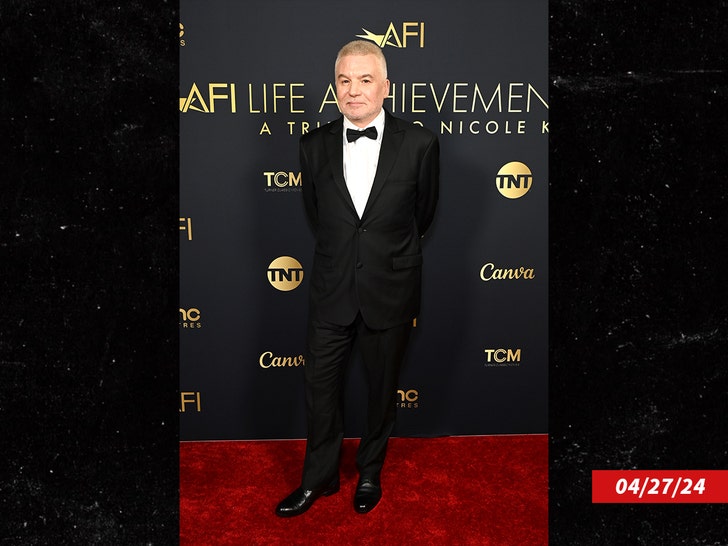Lifestyle
Solar eclipse myths and rumors bubble up, from radiation to food poisoning

People visit a NASA information booth to grab solar eclipse glasses in Russellville, Arkansas. The space agency has debunked a number of myths about the total solar eclipse — including ideas about food going bad, or unborn babies being harmed.
Mario Tama/Getty Images
hide caption
toggle caption
Mario Tama/Getty Images

People visit a NASA information booth to grab solar eclipse glasses in Russellville, Arkansas. The space agency has debunked a number of myths about the total solar eclipse — including ideas about food going bad, or unborn babies being harmed.
Mario Tama/Getty Images
Will a solar eclipse harm a pregnant woman’s baby if she looks at it? Does an eclipse emit special radiation that can instantly blind you?
Those are some of the ideas people have been asking about — and that experts have been pooh-poohing — as people in North America anticipated seeing a total eclipse, from Mazatlán to Montreal.

Monday’s total solar eclipse begins over Mexico’s Pacific Coast at around 11:07 a.m. PT, moving east through Texas and up to Maine, finally leaving the continent on Newfoundland’s Atlantic coast.
Solar eclipses have long triggered fanciful explanations and warnings, from religious mythology to modern-day superstition. In recent days, for instance, a message circulated online warning people to turn off their cellphones and other devices before midnight ahead of the eclipse, warning of powerful radiation and cosmic rays.
In reality, a solar eclipse brings a temporary sharp drop in solar radiation — an event that ham radio operators have been eagerly anticipating for months, with competitions and experiments looking to fill the Earth’s suddenly radiation-free ionosphere with radio signals.
Persistent but unfounded beliefs even prompted NASA to devote a special page to debunking misconceptions about a solar eclipse.
Total eclipses don’t produce rays that cause blindness, NASA says
During totality, electromagnetic radiation from the sun’s corona will not harm you. In fact, the only time it’s safe to look at the sun without eye protection, as the sun’s brightness is fully obscured by the moon and its corona is visible.
But outside of totality, your eyes can be harmed during an eclipse. If the sun is only partially obscured, looking at it will damage your retina. You can look if you have special solar glasses, but don’t count on those to protect you if you want to use a telescope or camera lens that doesn’t have a solar filter.
As NASA says, “the concentrated solar rays will burn through the filter and cause serious eye injury.”
Another thing to remember: Take breaks if you’re using a special filter to look at the sun before or after totality. As the space agency says, the sun’s infrared radiation can make you uncomfortable, “as it literally warms the eye.”
You should look away from the sun periodically, or use an indirect viewer like a pinhole projector to track the eclipse.
More things NASA says are NOT true about a total solar eclipse
MYTH: If you are pregnant you should not watch an eclipse because it can harm your baby.
Another notion that seems to be rooted in concern about radiation. To put people’s mind at ease, NASA employs a sort of “you’re already soaking in it” example, citing the neutrino particles produced by the sun’s nuclear fusion:
“Every second, your body is pelted by trillions of these neutrinos no matter if the sun is above or below the horizon. The only consequence is that every few minutes a few atoms in your body are transmuted into a different isotope by absorbing a neutrino. This is an entirely harmless effect and would not harm you, or if you are pregnant, the developing fetus.”
MYTH: Eclipses will poison any food that is prepared during the event.
NASA gives a hypothetical: What if some bad potato salad makes people sick during an eclipse? Food poisoning is very common — and it shouldn’t be blamed on a rare celestial event, the agency notes.
“The basic idea is that total solar eclipses are terrifying and their ghostly green coronae look frightening, so it is natural to want to make up fearful stories about them and look for coincidences among events around you.”
Other myths have to do with omens and major events
Here are four that NASA singles out for debunking:
MYTH: Eclipses are harbingers of something very bad about to happen.
MYTH: Solar Eclipses foretell major life changes and events about to happen.
MYTH: Solar eclipses are a sign of an exceptional celestial event taking place in time and space.
MYTH: Solar eclipses six months after your birthday, or on your birthday, are a sign of impending bad health.
NASA ascribes many of these ideas to astrological forecasts being propped up by confirmation bias.
As the agency says, “We tend to remember all the occasions when two things happened together, but forget all of the other times when they did not.”
Other myths — such as the idea that the moon turns black during an eclipse, or that the Earth’s two poles don’t see eclipses — are simply false, the agency says.
Eclipses have deep spiritual meanings
Ideas about an eclipse’s potentially powerful effects aren’t new. In fact, solar eclipses do also cause some unusual things to happen.

People in totality can expect to feel a sudden drop in temperature, for instance. Stars and planets become visible in the middle of the day, and humans can experience a range of odd visual effects — from the sharpness of shadows to the movement of “shadow bands” and a change in how we perceive color.
Then there’s the eerie effect of the eclipse moving from west to east, adding to the perception that time isn’t moving in its normal path.
Many cultures and religions link eclipses to energy, seeing them as events of renewal and promise — or in some cases, of vital energy being drained away.
For the Ojibwe and other Indigenous peoples in the Great Lakes region, a story about a solar eclipse centers on a boy and his sister who trap the sun after it burns him.
In many folktales, magical animals try to eat the sun or the moon. In Hindu mythology, a serpent god, Rahu Ketu, wanted to eat the sun — but then his head was cut off. That created two new entities, Rahu and Ketu, according to the Folklife Today blog from the Library of Congress.
“These are the deities of eclipses and comets. Rahu is fixated on eating the sun and the moon, and will try to catch them and gobble them up,” the blog notes. “Fortunately he only succeeds once in a while. Since his head was cut off, the sun or moon just falls out the hole where his neck used to be. This is an eclipse.”
As Folklife Today notes, in many cultures, humans take up the duty of ending an eclipse, often by making noise and beating on drums or gongs to dispel the spirit that’s attempting to take the sun.

Lifestyle
As National Poetry Month comes to a close, 2 new retrospectives to savor

W. W. Norton & Company, Alice James Books

W. W. Norton & Company, Alice James Books
With National Poetry Month comes spring flowers and some of the year’s biggest poetry publications. And as April wraps up, we wanted to bring you two of our favorites — retrospective collections from two of the best poets of the late 20th and early 21st centuries: Marie Howe and Jean Valentine.
Howe’s New and Selected Poems makes a concise case for Howe’s status as an essential poet. The New & Collected Poems of Jean Valentine gathers all of the beloved late poet’s work, a monument to a treasured career.
New and Selected Poems by Marie Howe
Marie Howe is writing some of the most devastating and devastatingly true poems of her career — and some of the best being written by anyone. Her subject matter, from a bird’s eye, is simply the big questions and their non-answers: What are we here for? What does it mean to do good? What have we done to the environment? What are the consequences and what do we who are here now owe to those who will follow us? And yet her tone and straightforward delivery make her poems as approachable as friends. Howe is the rare poet whose poems one wants to hug closely for company, companionship, and empathy; and yet they are works of literature of the highest order, layered, full of booby traps and shoots and ladders that suddenly transport one between the words. It’s tough love that these poems offer, but it’s undeniably love.
This first retrospective gathers a book’s worth of new poems along with ample selections from of Howe’s four previous collections, each of which was a landmark when it was published. Her nearest antecedent might be Elizabeth Bishop, who also didn’t write very much, or didn’t publish very much, but everything she wrote was good if not capitol-G-Great. Howe is best know for What the Living Do (1997), which remains one of the great books on youth and grief, regret, and moving forward if not moving on. It regards a world in which “anything I’ve ever tried to keep by force I lost.” Startling, almost koan-like statements like this erupt out of unassuming domestic scenes, making everyday life into high drama.
The typical speaker of a Howe poem is a woman who seems much like Marie Howe, even when she is speaking through the voice of the biblical Mary, as she does in Magdalene (2017): “I was driven toward desire by desire.” She is serious except when she’s funny, though she’s rarely laugh out loud funny — it’s more of a kind of internal laughter, either like blossoming light or paper rustling in one’s chest. She is consoling, except when she is taking herself and readers to task, bowing under the simple, Herculean responsibilities that come with living a life, being a parent. She’s tough, sometimes even stoic, except that in almost every poem there is a moment of surprise, a revelation, a piercing insight that injects a kind of pure ecstasy.
Some of the new poems are among the best Howe has written, making them among the best period. Set “In the middle of my life — just past the middle,” these poems grieve lost friends; reckon with the sudden adulthood of a daughter; lament the destruction of the environment; and take the moral measure of this very disturbing era. Each of these everyday dramas becomes an access point for the deepest kind of human reconciliation, where we must finally admit where language fails us. These poems also feature a recurring character, “our little dog Jack,” who, with all best intentions, becomes one of Howe’s most devastating metaphors. But all metaphors have their root in plain fact. As Howe writes in “Reincarnation,” one of her best poems, “Jack may be actually himself — a dog.”
Light Me Down: The New and Collected Poems of Jean Valentine
This is one of those monumental events in American poetry: the life’s work of a major poet gathered in one big book, an opportunity to revel in all that Jean Valentine accomplished in her long and prolific career. As a young poet, Valentine (1934-2020) won the Yale Series of Younger Poets prize in 1965, for her debut collection, Dream Barker. In 2004, she won the National Book Award for Door in the Mountain: New and Collected Poems 1965-2003. In between, and after, she was always well regarded by the mainstream poetry establishment, winning most of the prizes available to an American poet.
But Valentine’s real influence was as a friendly ambassador to and from the avant-garde. It’s hard to pin Valentine’s poems down: I wouldn’t call them experimental, but they are anything but straightforward in their slippages of thought and wide leaps of association. Fairly early in her career, Valentine begin working in a style that had her teasing the reader with images, gently suggesting the way the poem should go, until, perhaps, a thunderclap at the end disturbs the calm. She always knows where to end. Pick almost any poem and the last couple of lines will shock you with their unlikely inevitability.
Valentine writes about everything — love, death, sex, the roiling political situations of the last half-century — with simultaneous candor and mystery: “I have been so far, so deep, so cold, so much,” she says prophetically in an early poem. She asserts that poetry can be made almost entirely through suggestion, that the poet must trust the secret links between one word and another, and trust that the reader will be willing to travel with the poet along those underground currents. In a short poem, a haiku from 1992, “To the Memory of David Kalstone,” dedicated to the literary critic who died in 1986, Valentine offers as succinct a statement of her poetics as one could want: “Here’s the letter I wrote,/ and the ghost letter, underneath—/ that’s my life’s work.” Valentine’s poems draw our attention to the words beneath the words, what’s said between them, in all the white space surrounding the poems.
Elsewhere Valentine opts for simple observations, stirred by a bit of mystery, as in the brief elegy “Rodney Dying (3)”:
“I vacuumed your bedroom
one gray sock
got sucked up it was gone
sock you wore on your warm foot,
walked places in, turned,
walked back
too off your heavy shoes and socks
and swam”
There are no sudden bolts of profundity here, nothing, really, that you could call insight, at least not overtly. Instead, Valentine asks an object, the sock, to carry the grief. This is a technique poets call the “objective correlative” — it’s an image that stands in for an emotion or knot of emotions. That unassuming object, or really just the word for it — sock — becomes a vessel, a kind of canopic jar to contain grief, but also to let it rattle around a bit. The poem ends with what might be an allegory for death, but is also a celebration of Rodney’s vitality. The language is as plain as can be, and yet I exit the poem with uncertainty, equally hopeful and despairing. Valentine is an expert at tensing these sorts of contradictions against one another. The emotional climate in Valentine’s poems is ambivalent in the best way, lit by contradictory energies.
And while this book is a monumental celebration of an extraordinary legacy, it is also sad to hold: Valentine was in an inexhaustible and generous force in American poetry until so recently. It feels impossible to accept the fact that she is dead while reading poems that are so profoundly alive.
Craig Morgan Teicher is the author of several books, including The Trembling Answers, which won the 2018 Lenore Marshall Poetry Prize from the Academy of American Poets, and the essay collection We Begin in Gladness: How Poets Progress.
Lifestyle
Mike Myers Debuts White Hair in First Public Appearance in Over a Year

Mike Myers returned to the spotlight for a rare public appearance this weekend … but folks had to do a double take, ’cause nobody could recognize him with his new hair color.
The actor stepped out Saturday for the 49th AFI Life Achievement Award Gala in L.A. — where Nicole Kidman was being honored — which marked his first time at a public event in about a year.

Mike looked unrecognizable with short white hair — but was rocking it proudly as he spoke onstage at one point … and posing for tons of pics before heading inside, all smiles.
He was even taking photos with fans too … acting goofy and posing for a bunch of selfies.
Mike has always kept a relatively low profile … as he and his wife, Kelly Tisdale, are known for keeping their home life super private. So, seeing MM out and about like this is pretty remarkable — especially since he’s a silver fox now, and totally leaning into it.

The last few times Mike was out in public was in April and May of 2023 — in April of that year, his was quite a bit longer … and more importantly, it was the same color of brown we’ve seen him in for years now.

In May, the guy was at a basketball game — with pretty damn good seats, it seems — but there … he was wearing a beanie, covering up his ‘do. Since then, he’s been kinda MIA.
Anyway, it was clearly a big enough occasion to get Mike out of the house and into the public eye again — remember, this was all about Nicole … and anyone who’s anyone showed up to give her her flowers, including a ton of celebs.
Among the stars in attendance … Reese Witherspoon, Joey King, Michelle Pfeiffer, Jane Seymour, Miles Teller, Naomi Watts, Morgan Freeman and lots of others.
Mike certainly stood out though … and we gotta say, he’s looking real sharp these days!
Lifestyle
In 'Dead Boy Detectives,' two best mates reject their deadly fates : Pop Culture Happy Hour

-

 Kentucky1 week ago
Kentucky1 week agoKentucky first lady visits Fort Knox schools in honor of Month of the Military Child
-

 News1 week ago
News1 week agoIs this fictitious civil war closer to reality than we think? : Consider This from NPR
-

 World1 week ago
World1 week agoShipping firms plead for UN help amid escalating Middle East conflict
-

 Politics1 week ago
Politics1 week agoICE chief says this foreign adversary isn’t taking back its illegal immigrants
-

 Politics1 week ago
Politics1 week ago'Nothing more backwards' than US funding Ukraine border security but not our own, conservatives say
-

 News1 week ago
News1 week agoThe San Francisco Zoo will receive a pair of pandas from China
-

 World1 week ago
World1 week agoTwo Mexican mayoral contenders found dead on same day
-

 Politics1 week ago
Politics1 week agoRepublican aims to break decades long Senate election losing streak in this blue state


















